I had a lot of fun setting up Bay Island Bonsai’s exhibit this year. Having recently returned from Japan, I found myself looking at trees in a very different light than I had before the visit. I now get much more enjoyment from flowering and fruiting trees, and I’m even more fascinated by the idea of balance in bonsai. On that note, I’ve really appreciated the recent discussions about whether certain trees point left or right. If an idea as simple as direction can lead to such rich discussions, either the trees in question – or our understanding of said trees – offer opportunities for improvement.
The crabapple below provided some much appreciated color to BIB’s exhibit. Discussion arose, however, as to the direction of the tree. More and more, I skip past the idea of which way a given tree points and start asking which way the tree could or should point. In other words, what can be done to a tree to enhance its balance or to clarify its direction?

Crabapple
The main branches on my trident maple are fairly horizontal and somewhat similar in size. Over time I plan to vary the angles at which the primary branches extend from the trunk and create more differentiation in branch size to improve the tree’s balance. I hope that in time to make it clear that the tree moves to the left.
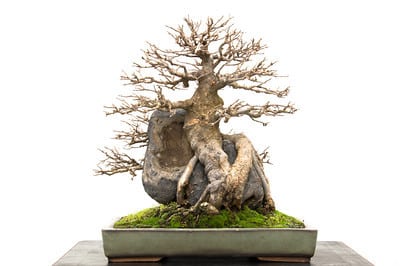
Trident maple – antique Chinese pot
A number of nice shimpaku made it into this year’s exhibit, including the two well-balanced trees below. Both get their sense of direction from the trunk more than from the foliage. Although people often respond strongly to direction of the upper part of the trunk or the foliage, it’s typically not enough to outweigh the sense of direction provided by the lower trunk.
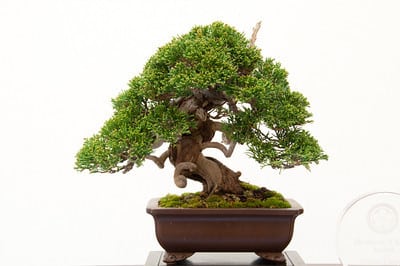
Shohin shimpaku
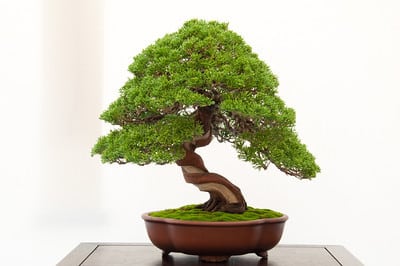
Kifu shimpaku
A small red pine provided an interesting example. The first branch indicates strong movement to the left. The foliage suggests movement to the right. It’s tough to say which way the trunk leads the eye.
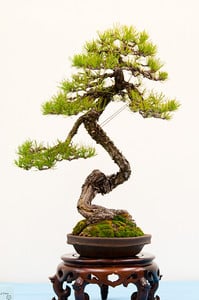
Red pine – nanban pot
I’ve always enjoyed this tree. For the exhibit, it was placed on the left side of the display, but Boon suggested that in the future it could go the other way. Tilting the tree slightly to the left made it clear that the tree has good potential to point left. Some minor branch work could complete the makeover.
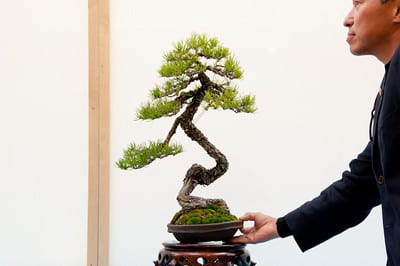
Red pine – tilted
Next week I’ll post photos of trees that more clearly know where they are going.
Subscribe to Bonsai Tonight
New Posts Delivered Every Tuesday and Friday
Steve Moore says
I guess my eye takes basic direction from the trunkline, unless the trunkline is not sufficiently visible. I’d say that red pine,as planted now, points right, overall. But I see Boon’s point, and I think he’s right …
A lot to explore in this seemingly-simple question of direction.